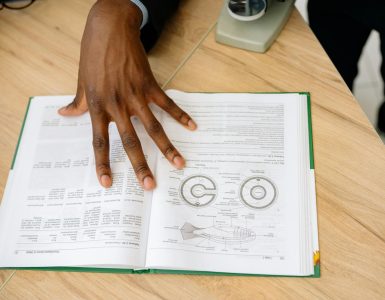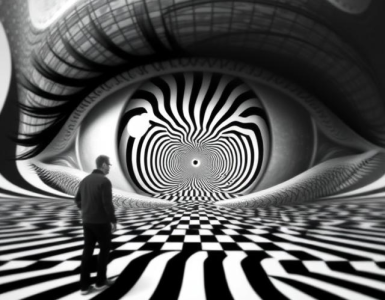Ever feel like the world’s a bit of a chaotic masterpiece, stitched together with threads of oddly connected facts? Well, you’re right. Let’s dive into some everyday “facts” – the kind you think you know – and flip the script a little. Prepare for a jolt of surprising connections and trivia that might just make you question everything (in a good way, of course).
The Humble Banana’s Unexpected Legacy
We all know bananas. Yellow, curved, potassium-packed…boring, right? Wrong! The Cavendish banana, the ubiquitous grocery store variety, is a monoculture – meaning almost all Cavendish bananas are genetically identical clones. This makes them incredibly vulnerable to diseases. The previous dominant banana, the Gros Michel, was wiped out by Panama disease in the mid-20th century. That’s right, your favorite fruit’s existence hangs precariously by a genetic thread. A similar disease threatens the Cavendish now. So next time you peel one, appreciate its surprisingly fragile existence.
The Surprisingly Slow Speed of Light (Relatively Speaking)
We hear “light speed” and think instantaneous. But consider this: light takes approximately 8 minutes to travel from the sun to the Earth. That’s not instantaneous – it’s a considerable delay! Now imagine light traveling across the vastness of space to distant galaxies. Those are photons that left their source millions, even billions, of years ago. Every time you look up at the stars, you’re essentially looking back in time. Das Drehbuch umdrehen: Alltägliche Verblüffungen und unerwartete Verbindungen
Cleopatra and the Pyramids: A Surprisingly Distant Relationship
Cleopatra, the last active ruler of the Ptolemaic Kingdom of Egypt, often gets visually linked to the great pyramids of Giza. But, here’s a kicker: Cleopatra lived closer in time to the invention of the iPhone than to the construction of the pyramids! The pyramids were built thousands of years before she was even born. Historical timelines can be surprisingly deceptive.
The Unexpected Power of a Single Neuron
Your brain is a complex network, containing billions of neurons. But, consider the power of a single one. Each neuron is a tiny biological computer, capable of complex calculations and communication. They’re the building blocks of consciousness, memory, and emotion. Next time you think “I’m just one person,” remember that you’re made up of billions of tiny, powerful processors coordinating in this amazing orchestration.
The Strange Case of the Placebo Effect
The placebo effect isn’t just “all in your head.” It’s a powerful demonstration of the mind-body connection. Placebos, inactive substances given as if they were real medication, can demonstrably alleviate symptoms in some patients. Scientists have observed measurable changes in brain activity and even hormonal levels in response to placebos, proving it’s not merely psychological suggestion. The power of belief is a significant medical phenomenon.
The Surprisingly Long Life of a Plastic Bottle
That plastic water bottle you tossed in the recycling bin? It might still be around long after you’re gone. Plastic doesn’t biodegrade easily; it breaks down into smaller pieces called microplastics, polluting our oceans and ecosystems for centuries. The environmental impact of seemingly disposable items like plastic bottles is surprisingly long-lasting and far-reaching.
The Great Lakes’ Hidden Depth
The Great Lakes hold roughly 20% of the world’s surface fresh water. But what’s truly astonishing is their sheer volume. If you were to drain all the water from the Great Lakes and spread it evenly over the lower 48 states, it would cover the entire landmass to a depth of nearly 9 1/2 feet. That’s a lot of water!
The Surprising Origins of Ink
Ink wasn’t always the vibrant, chemically-produced substance we know today. Some of the earliest inks were made from crushed insects, specifically the cochineal beetle. Their bodies contained carminic acid, a rich red pigment used for centuries. So, your great-grandmother’s handwritten letters might have a surprising insect-based ingredient.
The Unexpected Physics of a Rainbow
Rainbows aren’t physical objects you can reach; they’re optical illusions. They’re created by the refraction and reflection of sunlight in water droplets. The position of the rainbow changes relative to your viewpoint, making it a personal phenomenon. No two people ever see exactly the same rainbow. It’s a unique, ephemeral masterpiece.
Die überraschend laute Stille des Weltraums
We often picture space as a silent void, but this is a misconception. Sound needs a medium to travel through, like air or water. The vacuum of space lacks this medium, so sound waves can’t propagate. It’s not a silence we could perceive; it’s an absence of the condition that allows us to perceive sound.
These are just a few examples of how seemingly everyday things hide surprising depths and connections. The world is full of these miniature astonishments, waiting to be discovered. So, next time you encounter something familiar, take a moment to consider its hidden story – you might be surprised by what you find.

























Kommentar hinzufügen